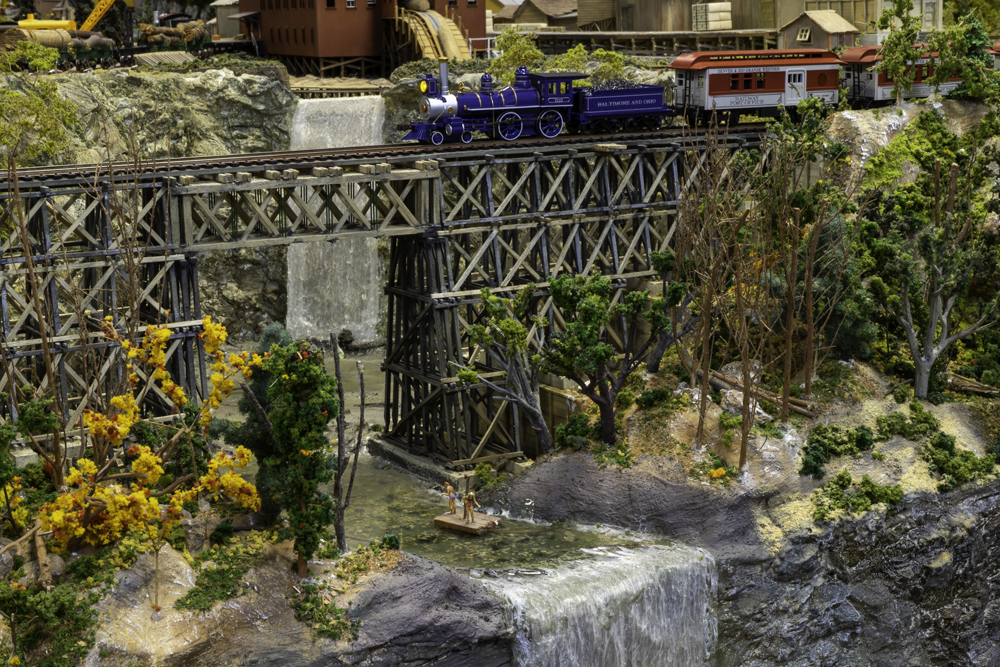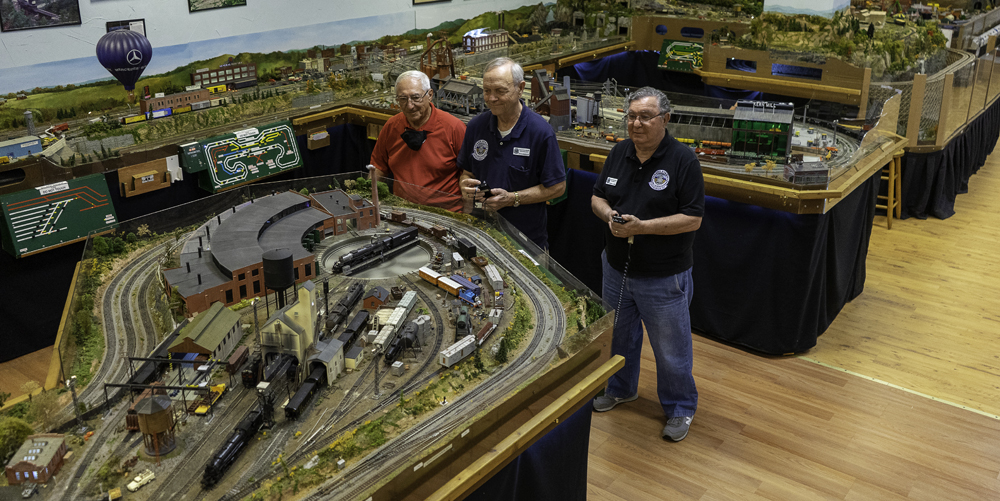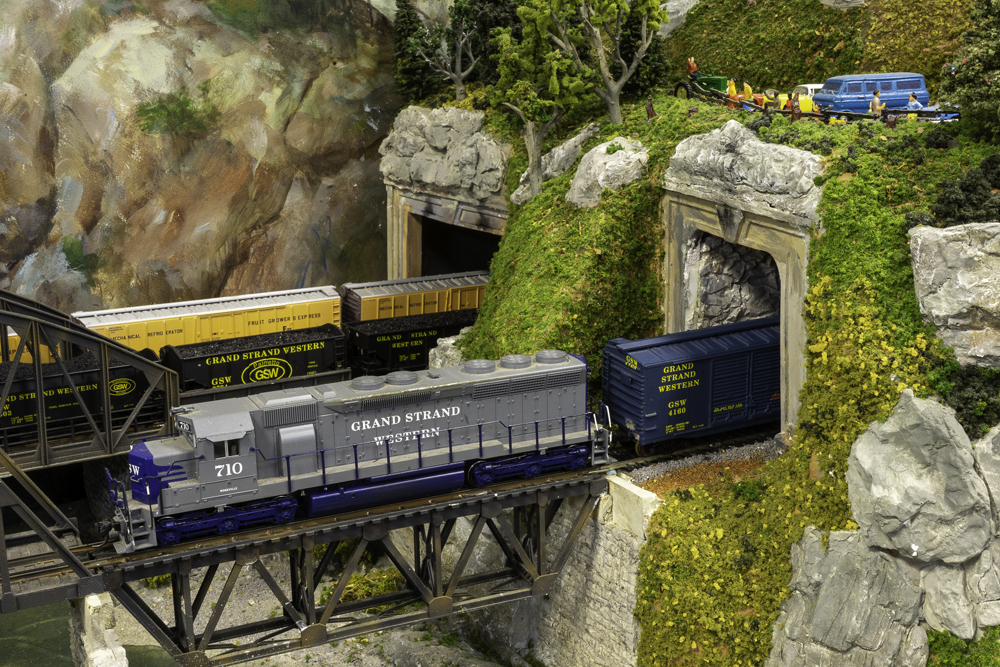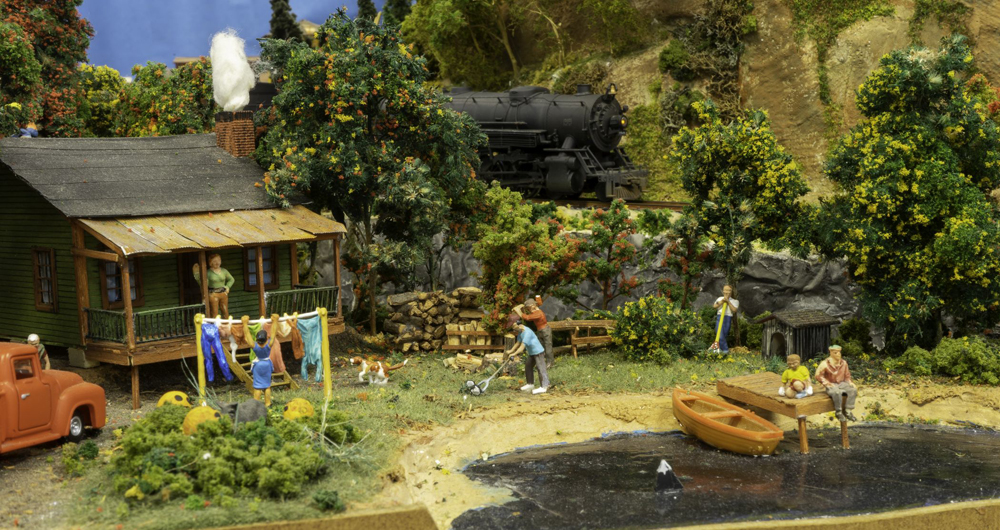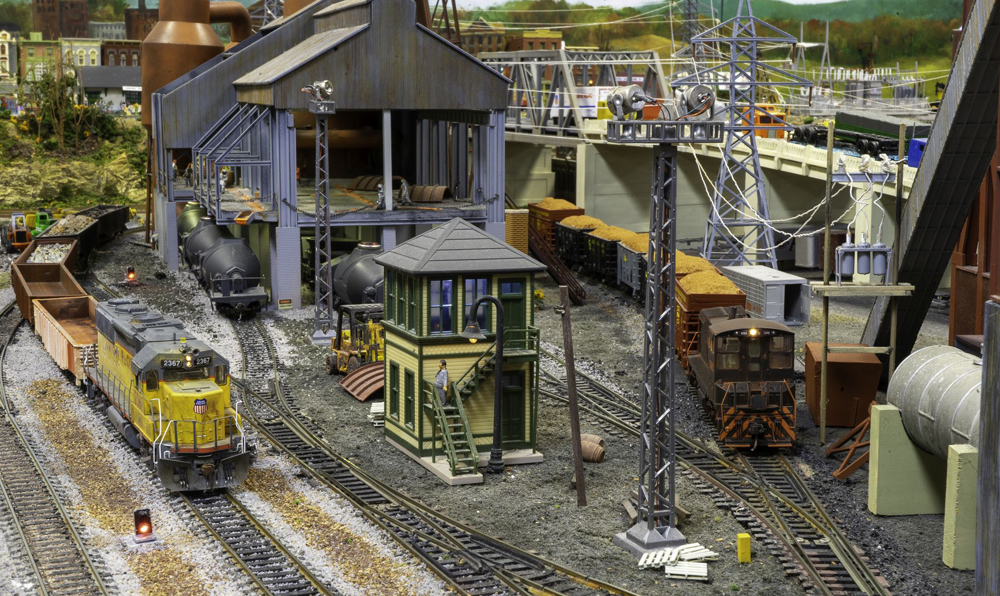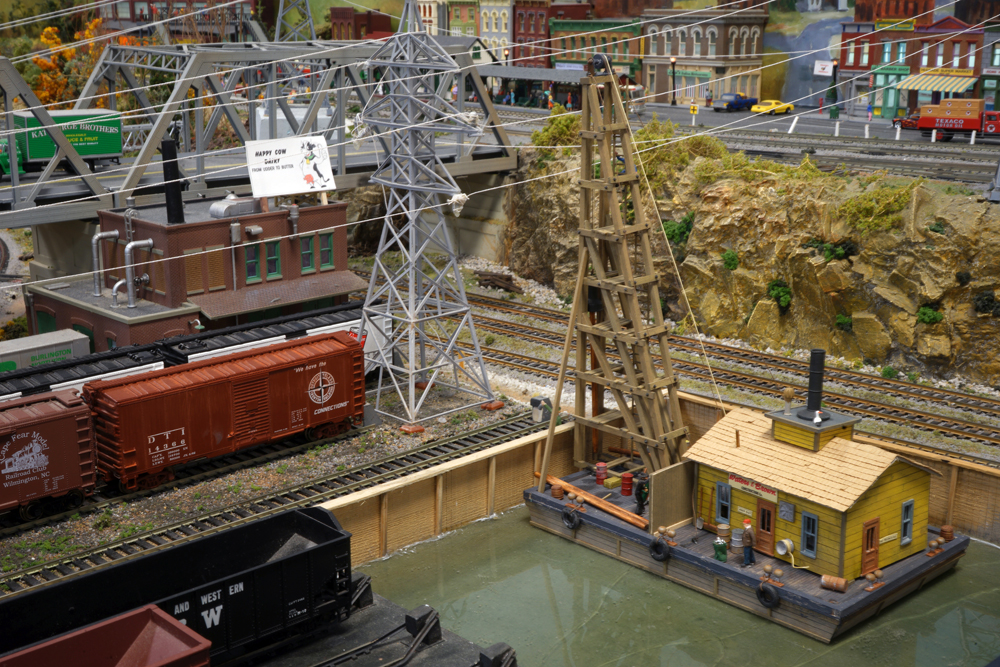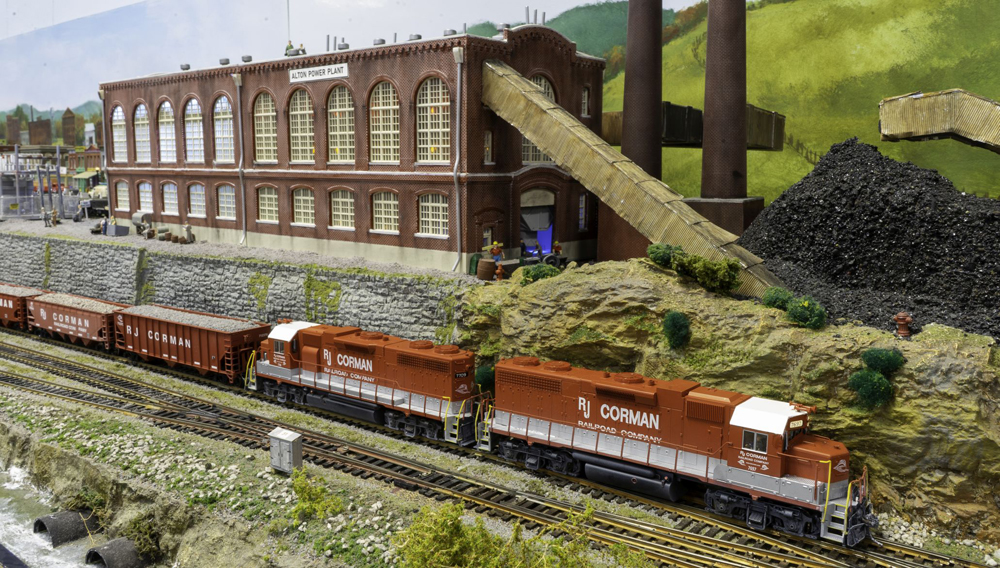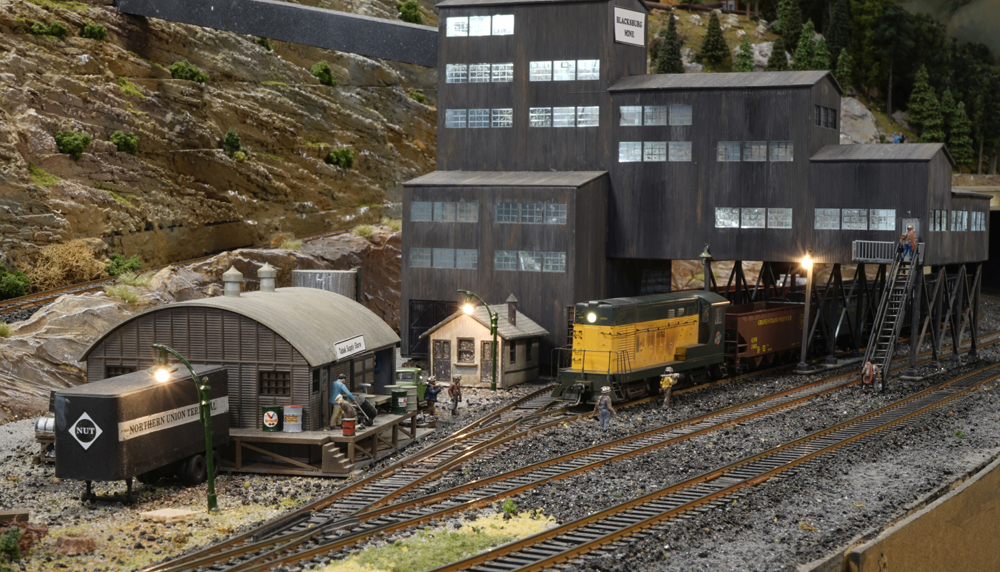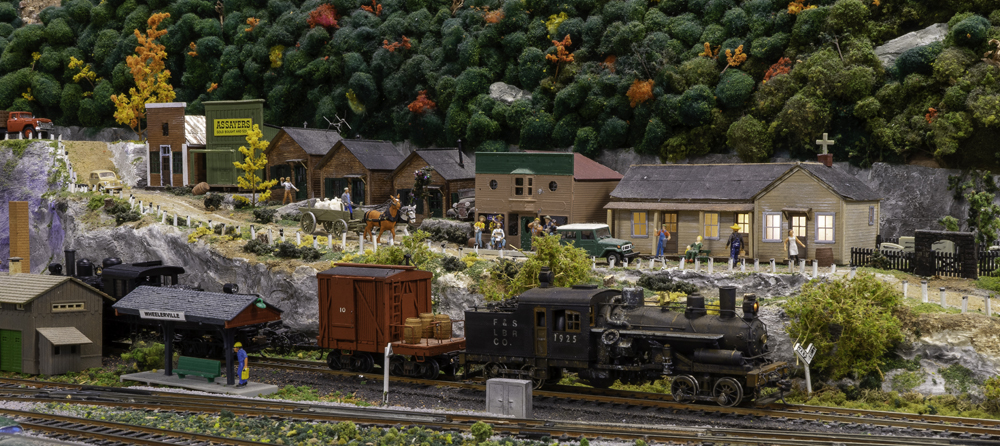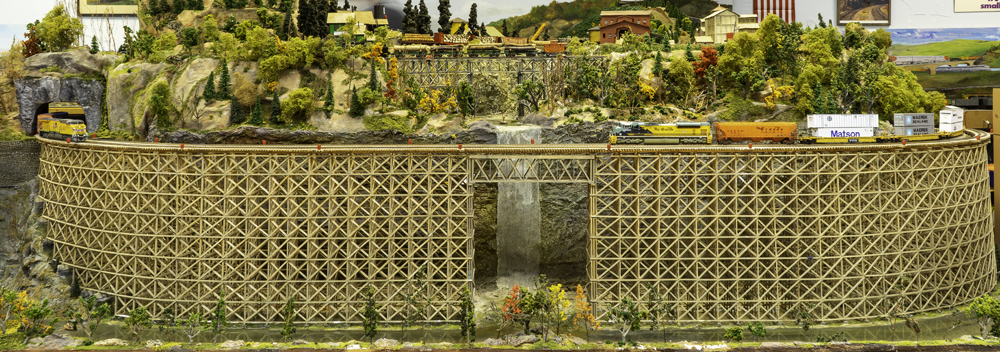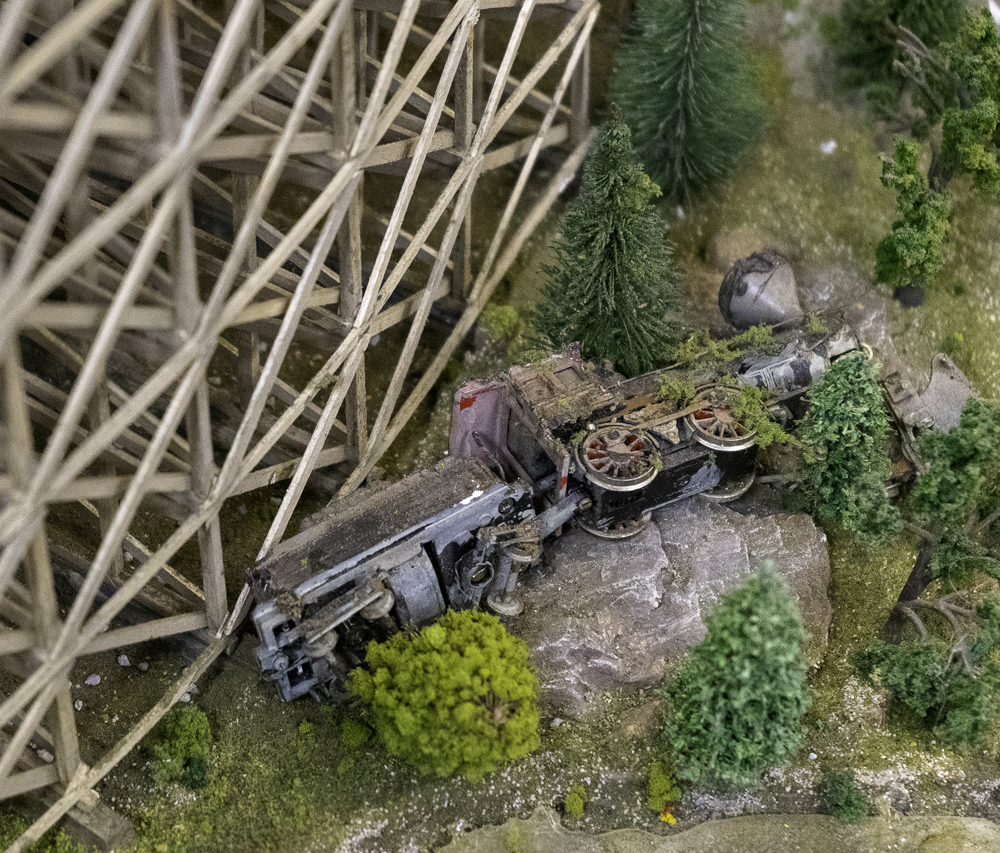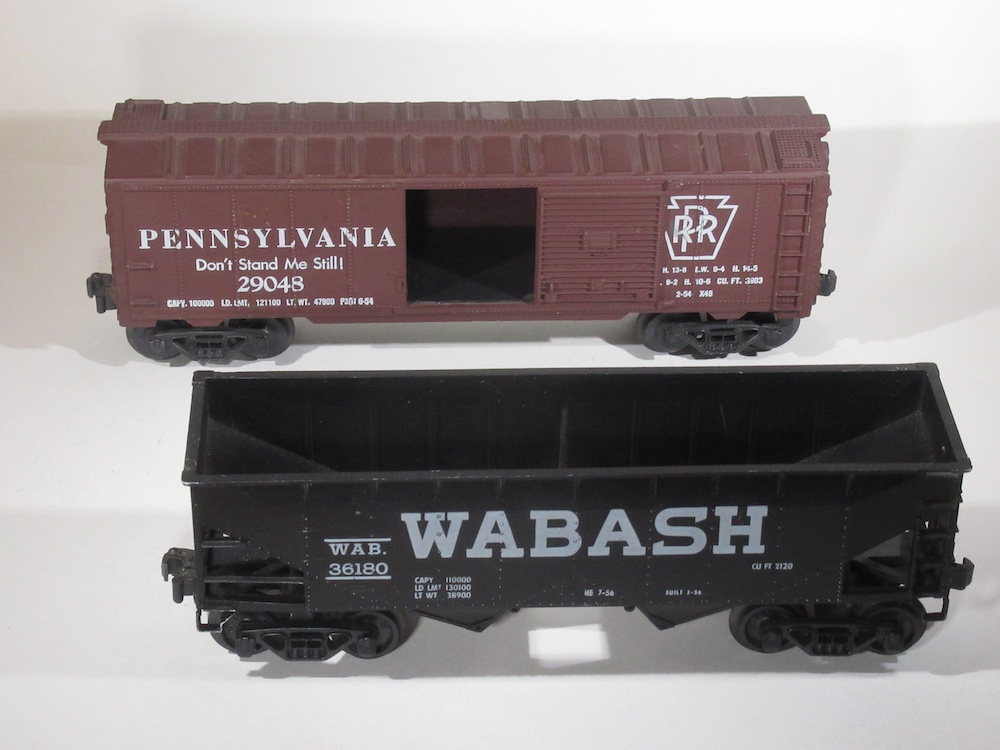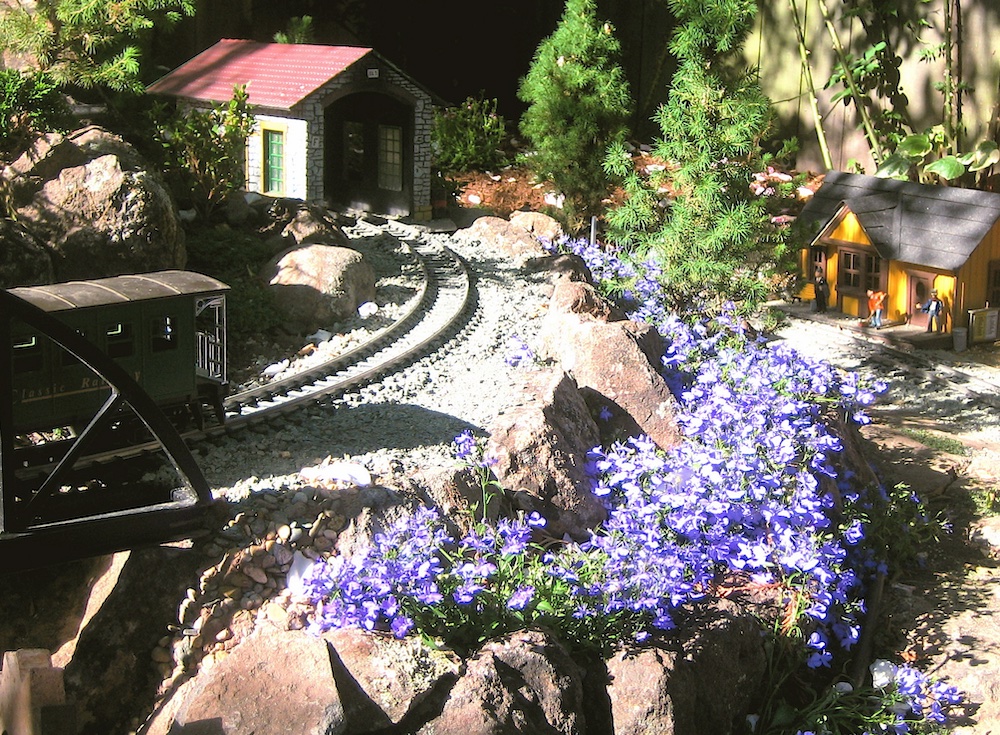By Ken Kilby
Tucked away in the northeast corner of South Carolina lies a stretch of coastline known as the Grand Strand. The Strand, as it is locally known, is roughly 90 miles of beaches, high-rise hotels, and condos. About a mile from the beach, you’ll find the Myrtle Beach Mall, home to the Grand Strand Model Railroad Club.
The club, formed in 1986 by six local model train enthusiasts, was originally located in a second story room over a local hobby shop. By 2010, the club had outgrown this space, and after an extensive search, moved into a vacant storefront in the mall where it has been located since.
The club currently boasts over 70 members, with some members driving in from as far away as Tennessee. The club has operating layouts in Z, N, HO, O, and G scales and is open to the public on Wednesdays and Saturdays. Since the move, the club has hosted over 300,000 curious visitors (and yes, they do keep count.)
Members are encouraged to bring in and run their own equipment. Trains are thoroughly checked out in the staging yard and test track before going out onto the mainlines. Preventing breakdowns, stalling, or derailments is essential especially when visitors are present.
Members can use either the club throttles, their own throttles, or more recently, their phones to run trains.
The club facility consists of the main room, home to the layouts, as well as a primary and secondary back room. The staging yards and power systems for both the HO and N layouts are located in the primary back room as well as lockers, a fridge, microwave, several large tables, and comfy chairs. Here, members like to relax and converse when not running trains. The secondary back room houses the club workshop.
The Grand Strand Western Railroad
The Grand Strand Western Railroad is the club’s Class 1 railroad and operates throughout the southeast with trackage rights up and down the east coast. There is an interchange yard so trains from every part of the country sporting every road name imaginable, including quite a few “home roads,” can be seen running on the layout alongside the locomotives and freight cars in the GSW livery.
The Layout
The layout is comprised of two distinct themes, with the lower part being mostly urbanized with heavy industries, while the Backus Mountain peninsula is rural in its setting. Special attention is paid to micro-vignettes like the deep backwoods pocket of “Home” on Backus Mountain.
The layout took roughly two and a half years to construct. The design is an “E” shaped footprint in an overall 36 x 14-foot space. The benchwork is a 2 x 4-foot open grid with 1 x 2-foot “L” shaped legs. The staging yard/mainline sublevel access track is the lowest point on layout measuring 53 inches from the floor to track top. The highest point on the layout is 75 inches at Backus Mountain.
The track is code 100 with the double mainlines running approximately 260 feet. The subroadbed is ¾” plywood with cork roadbed. There are 111 turnouts on the layout, including no. 4s in the yards, and no. 6s on the mainlines. All turnouts are operated remotely by Tortoise switch machines and have functioning indicator dwarf lights.
The maximum grade on the mainline is 2%. However, the climb up to the Backus Mountain mainline loop is just over 2% requiring doubleheaders on long trains. On Backus Mountain grades up to 4% can be found on the logging and mining lines and are only negotiated by geared locomotives. All non-visible tracks under Backus Mountain have sequential occupancy detection lights on the control panels so operators know where their trains are when out of sight.
All trains are assembled and broken down on the 2 x 17-foot ten track staging yard located in the back room except those consisted in the North Interchange Yard. After a train is assembled, it passes through portals in the wall, transits through the sublevel, and eventually emerges to switch onto the mainlines. The mainlines are oriented in an eastbound/westbound direction with a roughly six-inch separation between the upper tracks that run along the wall and lower tracks that run closer to edge of the layout.
The Steel Works occupies half of the central peninsula. It is a heavy industry that consists of a blast furnace, coke oven, electric furnace and rolling mill. The Steel Works is a major consumer of electricity requiring power lines running directly from the Alton Power Plant. The facility is large enough to accommodate multiple spurs and keeps the resident switcher busy shifting cars, making it one of several ideal locations on the layout to hone one’s switching skills.
Otter Bay occupies the adjacent side of the central peninsula. Carloads arriving and departing via carfloat are transferred at this facility. Bulk loads of dry goods are transferred to trucks and local freight cars while fuel is offloaded to storage tanks and then transferred to tank cars or trucks for local distribution. The scratchbuilt piledriver is usually tied up in the Otter Bay harbor. The handsome little unit is kept busy in the harbor dealing with the swift tides and incoming flows from the Flatshoals river.
The Alton Power Plant is actually two Walthers Powerhouse kits and has heavy power lines that run from the substation all the way to the Steel Works on the center peninsula. The power plant requires a constant delivery of coal to feed its voracious appetite and has its own “coal mountain” which makes it a major destination for all the coal drags that run on the layout. There is also a pump station which pumps cool water up from the Flatshoals River and into the plant. The station’s pumps are currently having scheduled maintenance performed and are being serviced on site. The power plant and the diesel shop both have roofs that can be propped open to reveal fully detailed and illuminated interiors.
Trains not going up Backus Mountain traverse the bridges at Flatshoals River, enter tunnel portals below the overlook and make the long run under the mountain via another sublevel and eventually emerge on the Baum High Trestle and then back down to the flatland.
The structures on the layout are a combination of kits, kitbashed, and scratchbuilt. The colorful backdrops were hand painted on hardboard panels by a local artist and run along the entire length of the layout’s two walls.
Backus Mountain
Occupying the layout’s entire north peninsula is Backus Mountain. The mountain is accessed by a turnout on the westbound line requiring eastbound trains to switch over. After crossing the Flatshoals River the track enters a portal and begin the steep climb up the hill. The Peterson Mill and the Blacksburg Mine are the major industries on Backus Mountain and employ most of the residents of Big Whiskey and the hamlet of Wheelerville. The industries and towns are serviced by spurs coming off of the mountain’s mainline.
Geared locomotives such as Shays, Heislers, and Climaxes which are built to negotiate the steep grades and tight curves transport the timber to the Peterson Mill from the abundant logging camps dotting the mountainside. The logs are then transferred to the mill pond and then up to the mill proper for processing with the finished lumber and wood chips being hauled down the mountain.
The little village of Wheelerville is a throwback in time where horse-drawn wagons and jug bands can still be encountered on the town’s main street. The tiny hamlet, however, does have its own passenger station which brings visitors up from the cities, especially on weekends.
Baum High Trestle
The showpiece of the layout is the double track Baum High Trestle, located at the front of Backus Mountain. The trestle is the first scene on the HO layout that visitors see when entering the club. The trestle is a whopping 13-foot-2-inches long and stands 17 inches from the bottom of the New River Gorge to the top of the rail on the center span.
The trestle took over 2000 man hours to build, ripping 79 bents from poplar wood stock, and cutting over 2400 cross braces from balsa using a jig. The rock wall was completed before the trestle was assembled in place. The trestle is protected by a plexiglass guard the runs the full length and height of the entire scene. Just above the High Trestle spanning the upper part of the gorge is another shorter wooden trestle that was salvaged and transplanted from the club’s previous HO layout.
At the bottom of the gorge the New River stretches the full length of the High Trestle and is fully detailed with canoeists, log cabins, and the wreck of an old steam locomotive and tender that went flying off the trestle one dark stormy night.
Visitor Challenge
The club has printed two small lists challenging visitors to find scenery items located throughout the layout. These items include the golfer teeing off on the back deck of the tugboat or the ATF helicopter lowering agents to the moonshiner’s still deep in the woods of Backus Mountain. This challenge encourages visitors to pay attention to the details of the layout.
Power and Control
The power and control systems for the layout were custom designed, built, and wired by club member. The system resides in a pullout drawer located under the staging yard in the back room. A Digitrax DCS200 Command Station/Booster unit powers and controls the entire layout and has its own ac power transformer. The track voltage and current from the command station are displayed on a RRampMeter, then routed through a PSX Powershield to four power buses.
A second DCS 200 power unit is mounted outside the drawer and is dedicated to the program and test tracks. The programming terminals on this DCS 200 are connected to a Soundtraxx PTB-100 Programming Track Booster and then to a DPDT switch at the programming track, located on the first shelf above the staging yard.
All the turnouts that connect to the mainlines are controlled by the main panel located below the North Interchange Yard. The steam engine facility, including the roundhouse and turntable, the diesel facility, the North Interchange Yard, the Steel Works, the Otter Bay yard, and Backus Mountain all have their own control panels located at their respective sites. As well as controlling all the switch machines and turnouts, the panels also have live track indicators as well as sequential occupancy lights.
Club Future
Some club members feel like the club is beginning to outgrow its current space and may be looking to move into a larger space. The HO benchwork was constructed in sections that could be disassembled and relocated, however most of the wiring would need to be replaced. Of course, moving all the layouts of a club of this size would be an enormous undertaking. Fortunately, all the layouts are currently operating smoothly, and for the moment at least there is no urgent need to relocate.
View the track plan of their O gauge layout from our sister publication, Classic Toy Trains.
The Grand Strand Model Railroad Club is currently open on Wednesdays from 12pm to 4pm and Saturdays from 10am to 4pm. The club is located in in Myrtle Beach, South Carolina. Visit the club website for more info. – Ed.





